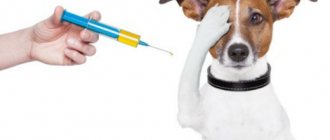In the conditions of metropolitan life, everyone has a difficult time.
People take in pets, but then, due to their own busyness, are unable or unwilling to fulfill their caring responsibilities. It may soon happen that the pet ends up abandoned. It's not easy for him to survive. Dogs can form packs. And then a real threat arises for nearby residents. How to protect your loved ones from an angry pack? Sometimes you have to make an inhumane choice and report to the dog hunter service.
Who are dog hunters
Today in the Russian Federation and other countries, the problem of deliberate poisoning of animals by dog hunters is more relevant than ever. Not only stray street dogs and cats suffer from such actions, but also beloved pets. Who are dog hunters and why do they pose a great danger to
Doghunters (dogkillers) are an organized group of people who, uniting through social networks, organize campaigns to persecute stray dogs. The organizers of such associations call themselves defenders of society and humanity from dog infections.
Initially, their activities were allegedly aimed at clearing city streets of stray dogs. But as practice and recent media reports show, animal haters have evolved and began to use forbidden barbaric methods against pets.
In addition to scattered “treats” in the parks, the dog hunter, moved by the dog, comes up to pet it and quietly slips a piece of meat, sausage, or other bait treated with deadly poisons into its mouth.
Animals poisoned by strong poisons die in severe pain after the toxins enter the body. Most often, poisoning ends in death. Unfortunately, it is not always possible to save the dog.
Important! The activities of dog hunters are illegal and cannot be ignored. There can even be poison for animals in playgrounds, so the actions of “virtue” people can harm the health of the child.
Who are dog hunters and why do they poison dogs?
In big cities, almost all “dog lovers” know who dog hunters are. And for the rest, we remind you that these are people who, for some reason, throw out poisoned baits intended for dogs.
The term comes from two English words: Dog (dog) and Hunter (hunter). Accordingly, the literal translation is “dog hunter.” Let us note that among them there are not only persons with sadistic tendencies, but also more moderate comrades whose goals do not pursue the extermination of all dogs in principle:
- Some fight stray animals.
- Some take revenge on specific animals with aggressive behavior.
Others simply do not like animals, but really like to poison them. It is from the “tricks” of the latter that pets need to be protected.
How dogs are poisoned by toxic substances
In order for the dog to swallow the poison, dog hunters grind the tablet preparations into powder and disguise the poison in canned food, meat, sausage pieces, liver, sausages, cookies, sweets, and other “delicacies” that will attract the dog’s attention.
Important! Baits are placed on the streets, in parks, at training grounds, near garbage cans, in the habitats of street dogs or walking areas.
Dogs are inquisitive and less picky about food than cats. In addition, poisoning by poisons occurs not only through the alimentary (food) route, but also through airborne droplets.
Important questions
Is there an antidote for all kinds of toxins? No!
These can be called adsorbent preparations - coal, Smecta, Enterosgel, Polysorb. Sometimes they shouldn't be used either. If you suspect intoxication, contact your veterinarian immediately!
How to keep your pet safe while walking?
- — away from playgrounds and lawns. In such places, dog hunters throw poison.
- - use a muzzle and leash.
- — training and education are required!
Nicotine will kill your dog quickly and without consequences. The recipe is simple - one milligram per kilogram of weight. Can be tucked into any meatball. The lack of taste characteristics does not allow one to suspect something is wrong. Affordable cost - five hundred rubles and the opportunity to exterminate a couple of thousand dogs.
Drugs and poisons used
To prevent poisoning of their pet and other animals, dog breeders should know what toxic agents dog hunters use. There are many remedies, but we will present the most common ones.
Drugs and poisons used:
- isoniazid, tubazid;
- non-steroidal anti-inflammatory drugs;
- metoclopramide;
- digitalis;
- rat poison;
- strychnine;
- zoocoumarin;
- salts of heavy metals;
- arsenic;
- cyanide;
- atropine.
These are the most commonly used drugs that have a toxic effect on the dog's body.
To deliberately poison animals, dog hunters also use alcohol, antidepressants, narcotic substances, poisonous medicinal plants, as well as grapes and even chocolate.
A dog, especially if the dog is hungry, is not averse to eating sweets, but chocolate products contain the alkaloid theobromine, which in high concentrations negatively affects cardiac activity and the nervous system.
Isoniazid, tubazid
Isoniazid (tubazid) is a tablet drug that is prescribed in medicine to patients for the treatment of tuberculosis of all stages and forms. This is the “favorite” among dog hunters’ weapons.
Important! Death from isoniazid, which is a lethal poison for dogs, is very painful. Unfortunately, the anti-tuberculosis drug is sold in any pharmacy without a prescription. The toxic dose is 50 mg of the substance per 1 kg of weight.
For poisoning, it is enough to eat bait poisoned with an anti-tuberculosis drug. Isoniazid is highly soluble in water, so it can be used to prepare various baits.
Even if the dog does not pick up from the ground and walks with a muzzle, for poisoning it is enough to simply lick and sniff the poison . The active substances of isoniazid are instantly absorbed into the gastrointestinal tract, penetrate the bloodstream, affecting the functioning of internal organs (heart, kidneys, liver), and enter the intestines and brain, disrupting the functioning of the central nervous system. The drug causes irreversible changes in the body, so you need to provide first aid as quickly as possible or take the dog to the veterinary clinic.
For a faster effect, dog hunters add other toxic substances to isoniazid, as well as antiemetic drugs (metoclopramide).
The first manifestations of isoniazid poisoning in dogs:
- drowsiness, lethargy, apathy;
- clouding of consciousness;
- foamy salivation;
- debilitating vomiting, nausea;
- change in behavior, anxiety, gives way to depression;
- spontaneous urination, defecation;
- muscle spasms, tremors;
- impaired coordination;
- change in heart rate;
- labored breathing.
If the animal is not helped in time, death occurs from severe intoxication, hypoglycemic coma, convulsions, and paralysis of the respiratory center. Symptoms of poisoning appear within 15-40 minutes. The maximum concentration of the active substances of the drug is observed after one and a half to two hours.
Death is confirmed 2-5 hours after eating the poison. It all depends on age, individual parameters, dosage, composition of the bait with isoniazid.
Atropine
Atropine is found in some types of plants (nightshade, datura, henbane). It is a strong toxic substance with immediate action. Affects the functioning of the nervous system and the psyche of animals. Active substances lead to loss of consciousness, spatial disorientation, heart rhythm disturbances, auditory and visual hallucinations. The dog suffers from convulsions and epileptic seizures. Foam comes out of the mouth. The pupil is dilated and does not respond to light.
Even the largest breeds of dogs die a painful death from atropine within three to seven hours.
Digitalis
Digitalis (digitalis) can also be called one of the favorite drugs of dog hunters, which they use to bait dogs. This is a very dangerous poison for animals.
The dog dies due to serious disturbances in the functioning of the central nervous system, intoxication, and paralysis of the respiratory center several days (7-10) after poisoning with a large dose of digitalis.
Cyanide
Cyanide is a deadly poison with instant action. Cyanides are derivatives of hydrocyanic acid. Potassium cyanide, sodium, cyanide (black cyanide) are mixed into pieces of meat, liver, and sausages and scattered in dog walking areas.
Cyanide has a negative effect on the dog's nervous system. The first symptoms are noted within 30-50 minutes after the dog has eaten the poisoned bait. Breathing is difficult. The pet does not orient itself in space and looks for secluded dark places. Foamy saliva is released from the mouth. The dog is vomiting. There may be blood in the vomit. The heart rhythm is disturbed, the pulse slows down, the pupil does not respond to light. The mucous membranes are pale due to internal bleeding, as cyanide blocks the production of vit. K, which leads to blood clotting disorders.
Gradually the reflexes fade away, the dog falls into a coma and dies in severe agony from paralysis of the respiratory center.
Rat poison
Rat poison is used to bait rodents. This is a potent toxic substance (pesticides, rodenticides) that causes death if help is not provided to the pet in time. A dog can eat a poisoned rodent, drink water from a puddle that contains rat poison, or eat poisoned food bait.
Anticoagulants entering the blood inhibit the production of vitamin K. The blood does not clot, internal bleeding develops. The danger of poisoning dogs with rat poison is that the first signs of poisoning and intoxication develop after several days and do not appear all at once. During this period, irreversible changes occur in the body of warm-blooded animals, the functioning of internal organs, in particular the nervous and respiratory systems, is disrupted.
Symptoms:
- painful stomach;
- lethargy, apathy, weakness;
- bloody vomiting, diarrhea;
- shortness of breath, frequent shallow breathing;
- refusal to eat, increased thirst;
- pallor, cyanosis of mucous membranes;
- convulsions, tremors.
The death of a dog when poisoned with a large dose of rat poison occurs from depression of the respiratory center due to pulmonary edema.
Nerve poison in Kolomenskoye?
At the beginning of November this year, among people known to the author of the article through one handshake, the dachshund Kusya died after a walk in Kolomenskoye. “They didn’t do an examination, they took the word of the ambulance doctor, she had 3-4 cases of poisoning per day. There are different poisons, one more terrible than the other. I will say one thing: no one diagnosed the poisoning, neither I nor another doctor who arrived during the day. The symptoms were completely different, if I had immediately realized that it was poison, I would have injected an antidote,” the owner of the deceased dog wrote in a discussion on Facebook.
Kusi’s owners and their friends are sure: the dog was trained not to pick up anything during a walk, he only sniffed other people’s marks. Maria Sveshnikova, the author of an article on the Vesti.ru website, is sure that they turned out to be a nerve poison that you just need to inhale. What kind of poison it was would hardly be worth publishing in the press, and, as has already been said, there was no examination. There was, obviously, no statement to the police.
“Of course, there are chemical warfare agents – sarin, cyanogen chloride, etc., which many know about from basic military training lessons at school,” dog handler and journalist Elena Tipikina explained to Miloserdiy.ru. “But they are very volatile, these are very short-acting substances, and poisoning requires a large concentration. If you pour such poison onto the lawn, after half an hour there will be no trace left of it. To poison both dogs and people, a war must begin with the use of chemical weapons: a cloud descends, it is enough to spend a few minutes in a gas mask, then you can take it off.
It is not very clear what nerve poison can remain in a lethal concentration in the open air, waiting for the dachshund Kusi to walk in the evening. However, if he was nevertheless tempted by the poison, carefully stuffed by some abnormal person into a liverwurst and left on the lawn, this, of course, does not make it any easier for his owners.
Rumors about formalin-based poisons are circulating on the Internet, but it is not possible to explain how they maintain a concentration sufficient to cause poisoning when inhaled. “And if this is possible, there is no need to write about it in the media, otherwise it will become as common as tuberculosis pills,” bloggers say.
Sometimes they talk with fear about the toadstool toxin that fishermen spray onto baits from spray cans. Its effect can well be called nerve-paralytic, and after the death of a dog one can always say that it ate a mushroom in the park - without specifying how it came to that idea. The arrest of a man who sprayed this poison was reported in St. Petersburg in 2012 - with a remark that the police did not confirm the arrest of the poisoner. However, the production and storage of such poison will still be a criminal offense, and in addition, it requires a fair amount of chemical knowledge and a large laboratory. The Internet carefully reports that if the poison is isolated from the toadstool, the connection will not be stable. It’s easier to put whole mushrooms into the sausage... or, even easier, read in the media about poisoned dogs: almost every publication will contain a simple and cheap “recipe”.
Symptoms and signs of poisoning
Manifestations after toxic compounds or chemicals enter the dog’s body develop within a few hours or days.
Symptoms and signs of dog poisoning with toxic substances and poisons:
- change in behavior (restlessness, lethargy, depression);
- lacrimation, foamy salivation;
- seizures, tremors, epileptic seizures, convulsions;
- vomiting, profuse diarrhea;
- allergic reactions;
- pallor, cyanosis of mucous membranes;
- refusal of food, lack of or increased thirst;
- uncharacteristic reaction to stimuli;
- dilated pupils;
- unpleasant odor from the mouth;
- decreased blood pressure, heart rhythm disturbances;
- disorientation in space;
- unstable temperature;
- unsteady gait, lack of coordination.
The intensity of clinical signs of poisoning by toxic substances depends on the type, nature of the poison, its concentration, mechanism of action, physiological, individual parameters, and the age of the animal.
Breeds of Traveling Dogs
Sources
- Law and Economics No. 06/2012 / Absent. - M.: Justitsinform, 2012. - 145 p.
- Rubin, Yu. B. Competitive status of market participants / Yu.B. Ruby. - M.: Synergy, 2016. - 398 p.
- A set of reviews from departments... to legitimize changes to the Code of Laws / Absent. - Moscow: Lights, 2002. - 139 p.
- Practical accounting. Official materials and comments (720 hours) No. 6/2013 / Absent. - Moscow: Mir, 2013. - 521 p.
- Investigation of crimes committed by organized groups. Scientific and practical manual / Absent. - M.: Prospekt, 2010. - 369 p.
Is there a universal antidote?
If a dog is poisoned due to the activities of dog hunters, many dog owners are interested in the question “Is there a universal antidote (antidote) for all poisons?” No, unfortunately, there is no single antidote that will be effective in all cases.
Therefore, if your dog is poisoned, and you suspect that the intoxication was caused by the substances listed in this article, urgently take your pet to the clinic or call a doctor at home.
Before the veterinarian arrives, you can provide first aid to the animal by first consulting with a veterinarian.
The only antidote that will help save a dog’s life in case of isoniazid or tubazide poisoning is pyridoxine (vit. B6). The drug is available in the form of injections for intramuscular and intravenous administration. 1 ml of injection solution contains 10 or 50 mg of pyridoxine. The dosage is calculated by weight, as indicated in the instructions for the drug. If the dog weighs up to 20 kg - 3-5 ml, if the dog weighs more than 20 kg - 8-10 ml.
In case of severe poisoning, it is permissible to use the maximum dose, this is 1 ml of B6 50 mg/ml per 5 kg of weight.
Important! The drug is absolutely non-toxic and does not cause side effects if the recommended dosage is exceeded several times.
The anticoagulant for coagulant poisoning of a dog is vitamin K (Vikasol). If it is not possible to determine what caused the poisoning, detoxification therapy is prescribed. Vit K, cardiac glycosides, saline solutions, diuretics, drugs against spasms and seizures are used. In especially severe cases, blood transfusions cannot be avoided.
Latest news
On December 10, media reports appeared that Moscow deputies demanded that the capital police report on the work done in 2013 to catch dog hunters - people who exterminate dogs and other animals, scattering pieces of meat stuffed with poison or nails throughout the city. The capital's authorities confirm that the flow of alarming calls from dog owners has resumed with the arrival of cold weather.
According to animal advocates, in the past year there have been more than 430 cases of poisoning of dogs and cats in the capital. Not a single person has yet been held responsible for this. Even if criminal cases were initiated, they were terminated either due to the absence of suspects or due to the lack of proof of the crime (a toxicological examination costs at least 20 thousand, and most owners of poisoned dogs do not conduct it, which means that there are no supporting documents in the case).
Meanwhile, by December 24 this year, all stray dogs in Moscow must be counted. A competition for the right to conclude a government contract to carry out these works has been announced by the capital’s Department of Housing, Communal Services and Improvement. In the report on the work done, the contractor will have to not only assess the total number of stray animals by administrative district, but also propose measures to control the population of stray dogs.
First aid for a dog in case of poisoning
Before arriving at the clinic or veterinarian at home, you can alleviate your pet’s condition on your own. Considering that in some cases the count is not even hours, but minutes, competently provided first aid to a dog in case of poisoning will save the life of a pet.
At home in case of poisoning:
- The dog is given adsorbents (activated white, black carbon, Enterosgel, Enterosorb, Polyphepam, Atoxil);
- Induce vomiting to cleanse the body of toxins;
- Rinse the stomach with specially prepared solutions;
- For anxiety, sedatives and medications that relax the muscles are used. The dog, if it is in the medicine cabinet at home, is given 1-2 tablets of Gidazepamam or Phenazipam. These drugs are available with a prescription.
- If you have muscle spasms or convulsions, consult your veterinarian about what medications to give your pet.
- To speed up the removal of toxins from the body, give your pet a diuretic medicine.
Subsequently, the dog is kept on a starvation diet for 24 hours without restriction in drinking water, and symptomatic medications are used, the effect of which is aimed at normalizing the general condition and normalizing impaired organ functions.
Important! Enemas and some sorbents cannot be used if the dog has been poisoned by alkalis, acids, coagulants, or the dog has convulsions, fits, or neurological disorders. Do not induce vomiting if the dog is unconscious or more than 2-2.5 hours have passed since the poisoning.
If a dog is poisoned with coagulants, rat poison, or other pesticides, internal bleeding must be stopped as quickly as possible. To do this, the dog is given an injection of Vikasol (1-2 ampoules).
To normalize liver function, give your pet Heptral, Essentiale-Forte, and other hepatoprotectors for 7-9 days.
But in any case, even if the dog feels better, we recommend contacting a veterinary clinic . The veterinarian must examine the dog, and, based on the results of studies and tests, prescribe further treatment and supportive therapy.
Justifiable homicide
On the doghunter website vredy.org, which members of the “Green Leash” are going to demand to be included in the “black list” of Internet resources, there is an entire topic dedicated to Leonid Yarmolnik’s speech at a rally on Pushkin Square. The artist said that if he had met a dog-killer on the street, he would have shot him. The dog hunters were outraged by the performance; at the forum there were proposals to bring the famous artist to criminal liability under Article 282 of the Criminal Code of the Russian Federation for inciting hatred or enmity.
Leonid Yarmolnik at a rally against dog hunters. Photo by ITAR-TASS, Stanislav Krasilnikov
“A dog hunter is someone who independently destroys stray, stray, and non-owner dogs. Dog hunters are a direct consequence of the Moscow and St. Petersburg system of regulating the number of stray animals, the so-called sterilization programs, when dogs were sterilized and released,” says dog hunter Evgeniy, one of the moderators of the site vredy.org, via Skype. In his opinion, the sterilization program was a failure: the number of stray dogs sterilized cannot exceed the number of stray dogs that manage to reproduce.
Evgeniy is about 30 years old, he lives in Krasnoyarsk and works as a lawyer. Married, no children yet. The family owns a dachshund. “An old, cowardly, ill-mannered bitch that I got with my wife,” says Evgeniy. - But I love her, of course. If I didn’t love him, there wouldn’t be this dog - there is someone to take her off. Good, smart dogs are such sweet little dogs, but I don’t respect those stray things that run around and periodically try to encroach on my integrity.” Every evening, Evgeniy goes for a jog with his dachshund in the forest and considers the people scattering poison in the parks as “sorry, s***s”: “This is not doghunting.”
Evgeniy says that the dog hunter movement first arose on the guns.ru forum “from those who like to shoot dogs and crows.” But this club of interests was “politely asked to leave” the forum. The interlocutor of Lenta.ru accessed the forum of the site vreditelyam.net (later - vredy.org) using the link indicated in the article “Psinosrach” in the encyclopedia of Internet folklore “Lurkomorye”. The forum “hooked” him, the problems discussed were clear and close to him, but only a year later Evgeniy became a “practicing dog hunter” - and poisoned the dog. “Life somehow began to throw up this information in a concentrated way, which led me astray from the path of a pacifist,” he recalls.
First, the dog hunter learned how one of his friends, Lyudmila Sabinina, was almost killed by stray dogs in Krasnoyarsk. There were numerous lacerations on Sabinina’s body - on her arms, stomach, legs, thighs; the incident was reported on the local news channel. “The girl couldn’t even speak for a day, being in intensive care, simply from shock. The girl was a vegan; as a matter of principle, she did not eat animal meat, and the animals tried to eat her with pleasure. A pack of dogs left her, dressed in a fur coat, only with her bra,” says Evgeniy. When the dog hunter came to talk to Lyudmila, he was amazed at her reaction. Seeing dogs in the window, she “could not speak, and her whole body shook with spasms.” A few months later, Evgeniy learned that in Novocherkassk, Rostov region, a pack of dogs “teared apart a seven-year-old boy.”
Doghunter describes his state at the time as being close to hysterical. Evgeniy contacted the Rostov dog catching service, which sent him photographs from the scene of the incident. “In the softest of these photographs, the child is no longer there, but there are only some remains: a hat with brown spots, a rubber boot,” says Evgeniy. “Therefore, it was precisely that incident that made me understand a little that I most likely will not remain a pacifist.” The conviction was reinforced by an incident right in a hockey rink not far from the dog hunter’s house in Krasnoyarsk: “The kids are playing on the hockey rink, not bothering anyone, and then a pack flies in, one dog breaks away from the pack, rushes at a ten-year-old guy and cuts his face. After that, my eyelid twitches, my nerves twitch, I go to the pharmacy, buy that same isoniazid - in general, I prepare myself a complete ammunition load.” Evgeniy never found the pack that, according to him, attacked the child. He brought his first, as dog hunters say, “yummy” - food stuffed with anti-tuberculosis and anti-emetic pills (so that the dog would not spit out the poison) - to another pack of dogs.
The main principle of Evgeniy’s work is to make sure that the “yummy” gets to the recipient, and does not remain lying on the street. He describes that the dog hunters either give the poison from their hand directly into the dog’s mouth, or throw it to the pack, but make sure that the animals eat it. “There are basically two types of action. This is either grassing or shooting with a pneumatic weapon. Shooting is unsafe in a populated area, that's the thing. You can’t take a dog with a small caliber, but with a large caliber you can do a lot of business,” Evgeniy explains with knowledge of the matter. The dog hunter did not keep an exact count of the dogs killed - “only a dozen or two animals.” “There is a comrade in Ukraine who, a few months ago, started the second thousand, only personally. And he is not the only one there. That is, you understand the volume,” explains the dog hunter.
Another moderator of vredy.ru introduces herself as Alexandra Skuragina (“They know me like that on VKontakte”). She refused a personal meeting, just like Evgeny. Dog hunters believe that it is better to remain anonymous. “Our people don’t know the limits in anything. But in Rostov, not so long ago, one of our comrades, who is not even a dog hunter - he doesn’t hunt at all, but only handed over several flocks to the catching service - they tried to burn his car,” explains Evgeniy. On Skype, moderator Alexandra talks about herself: a woman over 30, lives in a private house in the Moscow region, raising “a very young daughter.” Unexpectedly, Alexandra says that she herself is a dog handler. She worked in a kennel for guard and security dogs, and now she trains dogs for private clients: “Whoever they bring, I train.” Three pit bulls live near the house - two adult dogs and a puppy.
“I'm just fed up. I'm tired of the constant fighting. It’s impossible to take the dog out of the entrance,” Alexandra explains why she decided to get rid of stray dogs on her own. “All my life I had serious dogs that could fight back against a pack. But stray dogs also mean constant dirt: bones, scraps, porridge, rags around the house. It irritates me greatly that they wanted to put my dogs in a muzzle, almost in iron cages, while stray dogs walk anywhere and anytime, biting anyone.”
Alexandra began getting rid of stray animals when she was still working in a nursery. Large dogs had to be led to work through a pack of stray dogs. The nursery employees began to “actively solve the problem themselves,” because there was no one to rely on: it was impossible to write a statement to the police about a stray flock. But, according to Alexandra, both she and her colleagues gave poison to dogs only “from hand to mouth”: “We are people who love dogs, I cannot allow the owner’s dogs to suffer because of my mistake. My own dogs were once poisoned with rat poison. But this is not my hobby, it is an extremely unpleasant activity. And the less I do it, the better.”
Photo Kommersant, Mikhail Pochuev
Alexandra destroys only those dogs that interfere with her and her relatives. She did not contact the authorities, unlike the moderator Evgeniy, who often calls the Krasnoyarsk catchment office, considering it useless. One day, Alexandra’s child was on vacation in another city. Next to the house where he was, there lived a pack of 18 dogs. Locals, when asked by Alexandra about how they allowed so many stray dogs to walk along the street, answered that the catcher came at their call twice, but the pack was not found: all the dogs hid. “I solved this problem within a week. We live in such a country that we have to do something ourselves,” says the interlocutor. Neither Evgeniy’s nor Alexandra’s relatives blame her: the dog hunter’s wife, Evgeniy, encountered stray dogs, and in Alexandra’s family, her mother did. But the dog hunters’ relatives are not yet planning to follow their example.
Two years ago, Alexandra came to the dog hunters forum because she realized that it was not enough to poison dogs around the house - she had to explain to others why they shouldn’t feed stray dogs. She believes that homeless dogs running around the streets are a consequence of the actions of animal protection organizations that promote sterilization instead of catching and shooting. “Everyone who pushed the SALT [trap, neuter, re-introduce] program is interested in keeping dogs outside. I wrote on a piece of paper that so many dogs had been sterilized, and put the money in my pocket,” says Alexandra. Like Evgeniy, she is sure that the mass death of animals in the 50th Anniversary of October Park is a provocation of a number of animal rights activists, directed against dog hunters: “Because they lose money: fewer stray dogs means less money.”
Instructions for gastric lavage
In case of poisoning with strong poisons, it is necessary to provoke vomiting in order to cleanse the body of toxins and chemicals with the vomit. Since the gastric lavage procedure is not pleasant for animals, ask an assistant to hold the dog during the manipulations.
Instructions for gastric lavage for a dog:
- Place the dog on a flat surface covered with a disposable diaper.
- Fix the dog in one position, holding the limbs and muzzle.
- Prepare a syringe and gastric lavage solution.
- For washing, use a weakly concentrated solution of potassium permanganate, a saline solution (1 glass of salt per 0.5 liter of warm water), a soda solution (a teaspoon of soda per 0.5 liter of water).
- Pour in the liquid gradually, in small portions. Make sure your dog doesn't choke, as this can lead to aspiration pneumonia.
- Pour the solution into the mouth until the vomit becomes clear.
To quickly provoke a gag reflex, use your palm to gently press into the stomach area. Massage the tummy at the base clockwise.
Some time after cleansing the stomach, give your pet any adsorbent. You can put in a drip and administer Ringer-Lock solution. You can also give a laxative (vaseline oil) after an hour. But discuss all further steps to normalize the condition over the phone with your veterinarian.
Human food
Just because a food is good for us doesn't mean it's safe for dogs. Chocolate contains large amounts of caffeine and theobromine, which dogs do not tolerate very well. This can lead to various disorders ranging from gastrointestinal, heart, blood pressure disorders and several others. All other things being equal, dark chocolate is more toxic. The toxic dose is calculated using the dog's weight, the type of chocolate, and the amount of chocolate the dog ingested. Be sure to contact your veterinarian and tell him this information so that he can advise you on what steps to take. It is often recommended to induce vomiting if food has been eaten within the last two hours. If poisoning is severe, your dog should be hospitalized and placed on a drip. Chocolate is generally the most common cause of poisoning, but there are others.
Grapes and raisins can cause acute kidney failure; macadamia nuts can lead to gastrointestinal upset, tremors and weakness. Avocado can cause vomiting and diarrhea. Sugar-free gum contains xylitol, which can cause dangerously low blood sugar. Signs of low blood sugar include weakness, loss of coordination, tremors and seizures. Because human food is generally fattier and spicier, dogs that overeat regular human food tend to suffer from gastrointestinal distress, which in severe cases leads to inflammation of the pancreas. Never allow your dog to eat your regular food, and always inform your friends and guests about this!
Safety rules when walking a dog
To protect your beloved pet from poisoning with potent poisons and deadly toxins, you need to follow a few simple recommendations.
Safety rules when walking dogs:
- From the first walks, wean your pet from picking up anything from the ground. If you have no experience in raising dogs, enlist the help of a dog handler.
- Monitor your dog carefully during walks. If the dog still tries to pick something up from the ground, wear a muzzle. Although it does not provide 100% protection, it still reduces the possibility of nutritional poisoning.
- Do not allow your dog to pick up “treats” near containers with household waste or under balconies. Make sure your dog doesn't accidentally wander into the basement. Walk away from trash heaps and landfills.
- While walking, if you notice suspicious actions of a stranger who is scattering something on the territory, inspect his place of stay and warn your dog walkers.
- Do not allow strangers to pet your dog. Remember that lately dog hunters have been acting brazenly and poisoning dogs without being embarrassed by the owners.
Well, one last piece of advice. Always keep a complete veterinary first aid kit on hand, which should contain disposable syringes, several ampoules of vitamin B6, Vikasol, absorbents, glucose, antiseptics, and other products that may be needed when providing first aid to a dog.
How to keep your pet safe
Among dog hunters there are also those who kill not only stray animals, but also their owner’s dogs. Such people have mental disorders; they may come up to you and offer your dog a poisoned treat or throw it when your pet is walking without a leash.
Photo from the site chelyabinsk.bezformata.ru
Compliance with the rules of raising and walking an animal will ensure its safety and minimize the likelihood of poisoning.
To protect the life and health of your pet, follow our advice.
- Wear a muzzle. This useful accessory will prevent your dog from picking up food on the street and prevent a lot of trouble. For example, if your dog is a large breed, then it can be dangerous to others. To feel confident and not create inconvenience for others, not cause their discontent and aggression, put a muzzle on your pet.
- Choose places to walk. Exclude areas behind garages, near landfills, and places where stray dogs gather.
- Keep an eye on your pet. Don't let him out of your sight, always be there. If he gets bait with poison, you can quickly pick it up.
- Train it. A trained and disciplined animal has a much better chance of survival. Teach your child basic commands.
- Don't let strangers feed your pet. Do not allow food from the ground or from other people's hands.
Rodenticides (poisons for rodents)
Mice and rat bait is made to be palatable to them, but unfortunately, a dog may find the bait edible for the same reason. Until now, many such baits are made on the basis of an anticoagulant, which blocks vitamin K and leads to massive internal bleeding and death of any rodent. Dogs experience the same bleeding, but because dogs are larger, without treatment, death usually occurs after 3-5 days. If your dog has recently ingested poison, induce vomiting as soon as possible and seek veterinary attention. Your veterinarian will give your dog vitamin K and you will need to monitor him for lethargy, weakness, and loss of appetite for 2-3 weeks. If you notice any of these symptoms, contact your veterinarian immediately. In exceptional cases, the dog may require a blood transfusion.
However, there are other types of baits. Cholecalciferol-based baits increase the level of calcium and phosphorus in a dog's blood, causing kidney damage. The dog will require urgent hospitalization and an IV to reduce calcium and phosphorus. There is another poison, bromethalin, which affects the brain. The dog experiences tremors and seizures, and eventually death. Of the three types of poisons, this is the most dangerous and difficult to treat. Therefore, if you have any rodent problems, only use anticoagulant-based rodenticides as they are the least toxic and easiest to treat. Place the bait in an area where your dog cannot get into it, and check the bait once or twice a day. If the rodent problem is resolved, dispose of the baits properly. If you spot dog tracks on the bait, seek veterinary help immediately.
Do not throw away the poison package and, if necessary, bring it with you to the veterinarian. With the help of this package, the doctor will be able to determine the type of poison and prescribe the appropriate treatment, since, unfortunately, there are cases when the doctor prescribes the wrong treatment due to the lack of all the necessary information.
Various chemicals
Antifreeze is very sweet and attracts many dogs. After consuming even a small amount of antifreeze, the dog becomes very drunk. However, after a few hours the dog will be sober and quite normal, but after a few days he will definitely experience kidney failure. The toxic component in antifreeze is ethylene glycol. There is an antidote for it, but it must be used immediately after consuming antifreeze, so if you suspect your dog has consumed it, seek veterinary attention immediately. Antifreeze based on propylene glycol is much less toxic, so if possible, buy it. Besides antifreeze, there are many other chemicals that pose a risk to all pets. These are substances such as paints, paint thinners, and pool chemicals. If a product is labeled as “poisonous,” be aware that it is also poisonous to animals and keep such products out of reach.
Be proactive and have an emergency first aid kit ready for your dog. In addition to the basic supplies that should be in the first aid kit, do not forget to put in it a 3% solution of hydrogen peroxide and a small syringe, with which you can induce vomiting in the dog. Also, do not forget to add saline solution to rinse the animal's eyes if necessary. And of course, always have your veterinarian's number and emergency medical number handy.
And remember that prevention is the best cure!
Abandoned dogs and wild packs in residential areas are a hot topic for any large city. People, deprived of everything human, throw away pets, get them and abandon them on a whim. And not a single such subhuman will think: where will his dog go? Abandoned dogs, as expected by instinct, create packs.
Quite quickly they run wild, and humans become a mortal enemy. You can’t blame them for this: the person betrayed loyalty, sold love. Another reason is the carelessness of people . We get a puppy and don’t think that in a year we will not have a child, but an adult female or male with full-fledged sexual instinct. Cuddles appear and the “kind” owner throws them in the trash like banana skins!
Angry tramps are dangerous to others.
But this scourge has a more serious problem - the threat from such swarms to ordinary people. These are carriers of various diseases and infections, including rabies . It is impossible to count how many people suffer from such swarms every day. In some cities, the percentage of such dogs is so high that it is impossible to walk alone. Unfortunately, sometimes packs attack people and kill them. This is a war where there is no winner and no aggressor. This is a vicious circle created by man himself, that is, by us. You, reading the article, are not to blame; perhaps you have never given up and even help homeless animals. But now you are going home and a ferocious pack with a leader is blocking the road.
Reluctantly and studiously ignoring pity, we make a cruel decision: to exterminate the danger , otherwise tomorrow they may tear up the cats, kill a child or you. And so those who madly love all furry four-legged animals, but are afraid for their lives, have to prepare poison for such dogs. We must remember: the law punishes inhumane murder. Maintain your humanity! We will tell you how poisons work and how you can poison formidable dogs. But choose the method where the dog will experience less pain. Remember that you are only eliminating danger, not settling scores. Every dog is innocent , it just found itself in such conditions when it began to pose a threat.
Insecticides (bug repellents)
The most common insecticide that dogs ingest is cockroach killer. They contain an attractant that is similar to peanut butter and which attracts dogs. Fortunately, the insecticides used today are practically non-toxic to mammals or their dosage in baits is very small. However, there is another danger, namely the container of poison, since the dog can swallow it whole. Therefore, when placing poison, you need to follow the same rules as in the case of rodenticides.
What is used to poison stray dogs? Main poisons
Before calling a special dog hunter service, think: is this a good solution? The point is that these knackers often poison the wrong dogs. 90% of ordinary yard or domestic pets fall under their attack, which do not harm anyone.
Aggressive flocks rarely settle in or around people's yards. They roam around the city and must be tracked down. They are smart, they won’t trust a person, you will have to think about how to catch them with poisoned minced meat. That is, poisoning dangerous dogs requires work and attention.
Dog hunters will not do this! After each visit, veterinary clinics in any city are filled with sick and poisoned pets. The dog ran ahead of its owner, sweet and kind, but with a “vacuum cleaner” personality, and ate the poison. Dozens of cats die after such raids. And most importantly: no one cleans up the corpses! You, dear residents, will have to do this! The result: danger is on the spot, a sea of innocent corpses and sin on the conscience.
Dogs do not tolerate any medicine well, so the main method of poisoning is based on taking certain medications. The most commonly used drug is isoniazid and its derivatives. The medicine is anti-tuberculosis, but is a lethal poison for dogs. Not everywhere you can buy it just like that; often it is available only at the dispensary itself. But in big cities this is not a problem, since the drug is not a narcotic and is not considered poisonous. Keep in mind that it takes almost 10 hours for the dog to die: it’s painful and scary. To kill one dog up to 10 kg you only need 1 tablet/kg. For larger dogs - 2 pieces/kg.










